Its early, early morning and the mist has still not lifted from the ground. The only sound is the soft thud of the elephant’s feet, the creak of the howdah and the rustle of bushes as these giants force their way through the undergrowth. There are four of us huddled on the elephant’s back and we are in Assam’s iconic Kaziranga National Park (Bagori range) to spot its most famous resident – the great Indian one-horned rhino.
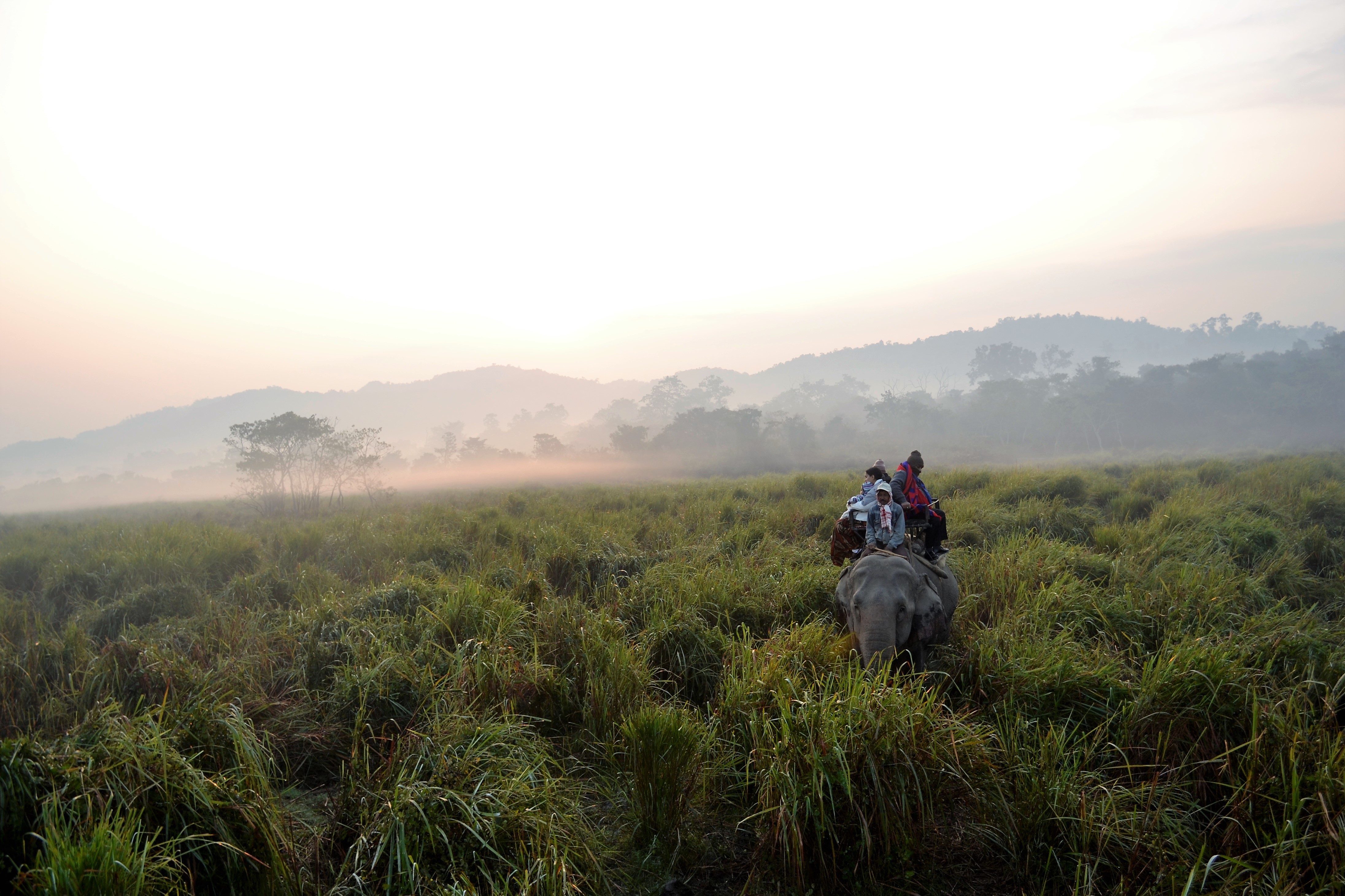
Suddenly, our mahout (a man of few words) grunts, mutters something under his breath which makes the elephant stop and points to our right. We strain our eyes in the dim light searching the waist high grass and then we see them…….two ghostly grey shapes in the distance. Rhinos!
The mahout urges the elephant forward and as we get closer we can see that its a mother and her calf. The mother looks up quizzically, moves closer to her calf and continues feeding. Rhinos have poor eyesight but can be unpredictable. They sometimes get spooked and charge so there are usually 2-3 elephants in a group. Strength in numbers.
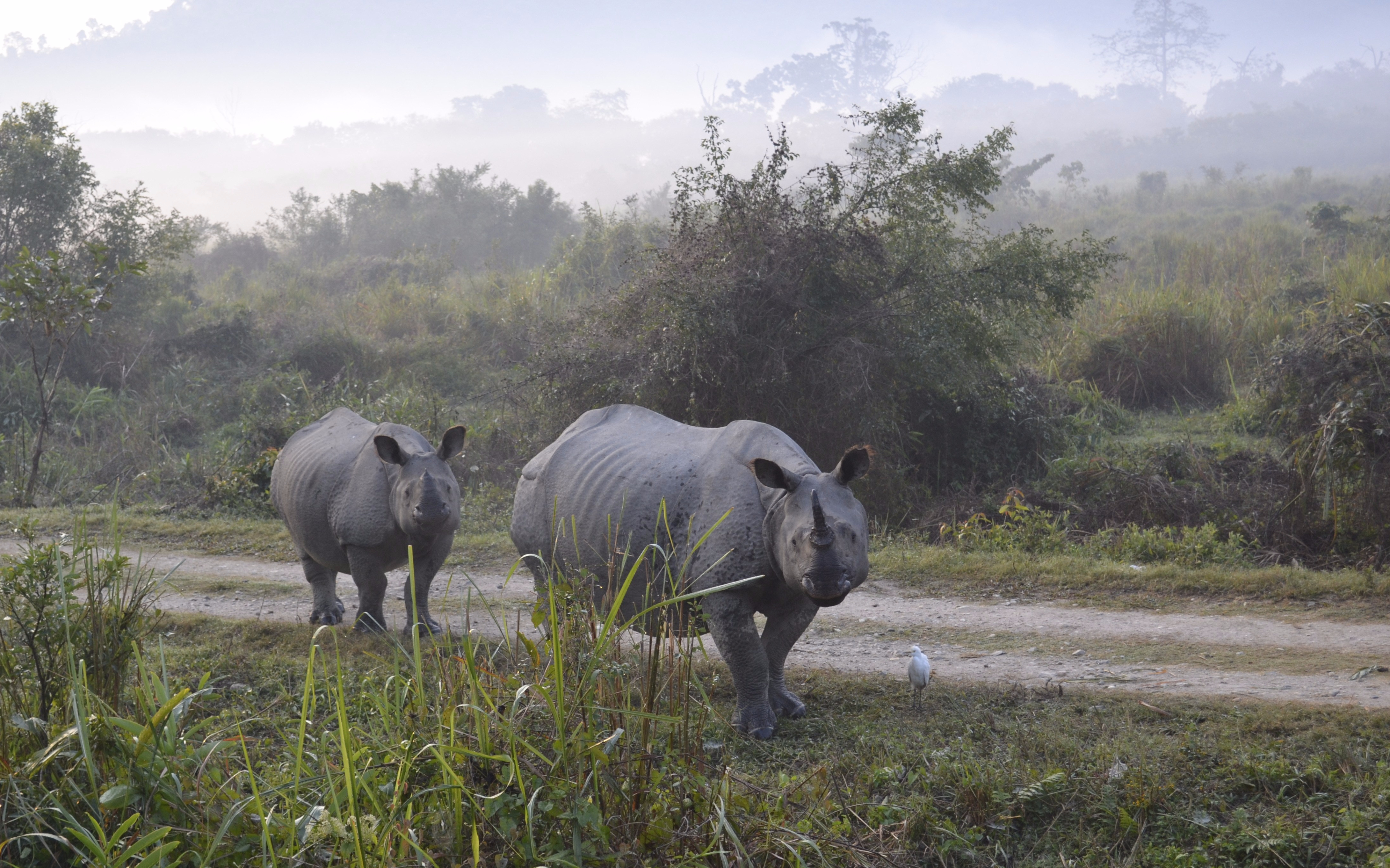
There are close to 2400 rhinos in Kaziranga so a sighting is almost assured. But these animals face constant danger from poachers who sell their horns at a huge profit to the lucrative markets in the Far East. Then there are the floods- the river Brahmaputra flows to the north of the park and every year, true to form, it flexes its muscles and swamps the park driving the animals to higher ground. Unfortunately, the higher ground here is the highway so its not uncommon to see rhino, deer and wild buffalo jostling for space with buses and cars during the floods! And, no, there are no zebra crossings!
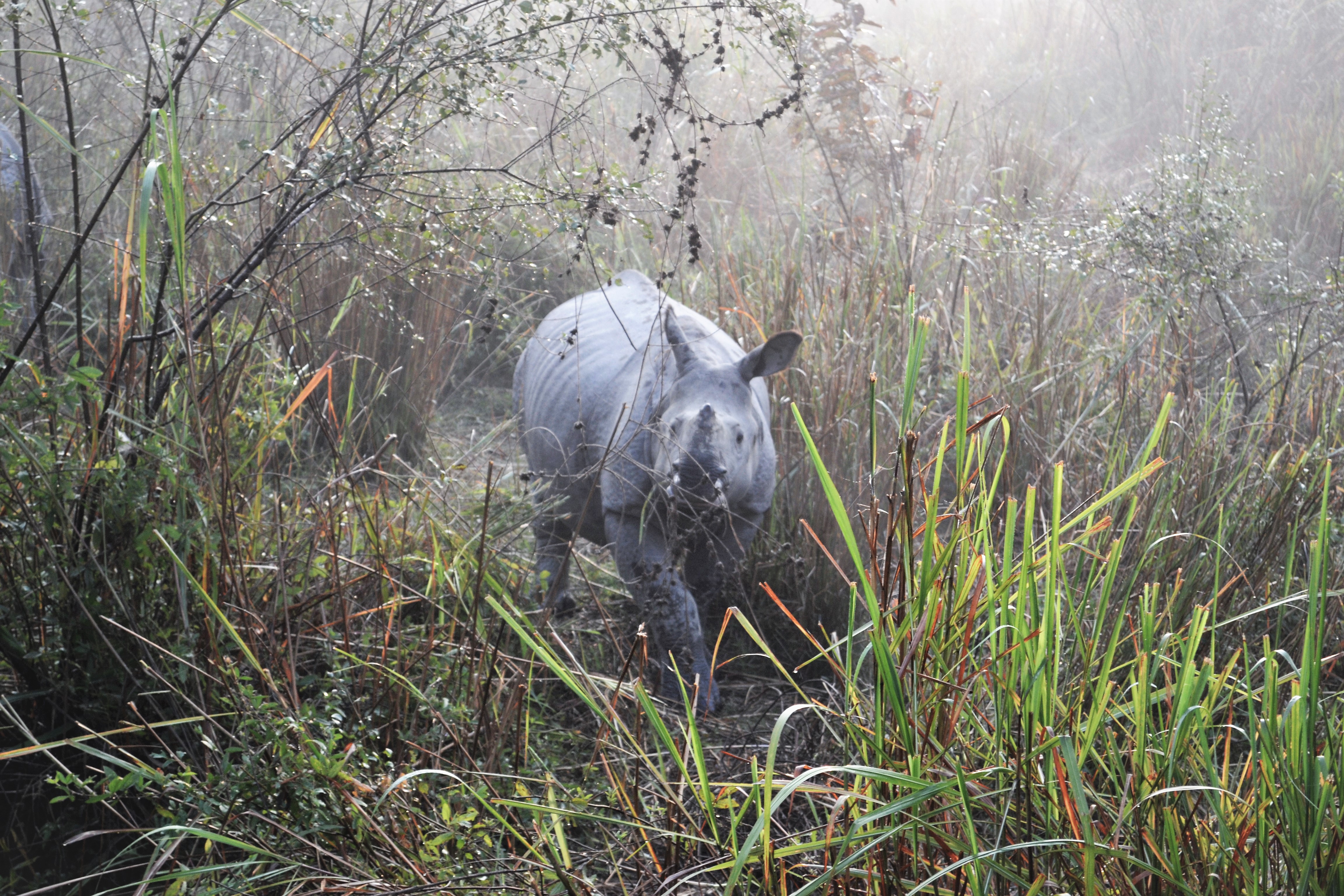
If you have the time, then Kaziranga can offer much more than rhinos. Further down the road is another range of the park called Kohora, where its possible to take a long jeep ride and do some serious birding and catch a glimpse of some other wildlife…. my friend Leena caught this big boy peeping at us through the trees. We didn’t like the glint in his eye and beat a hasty retreat!
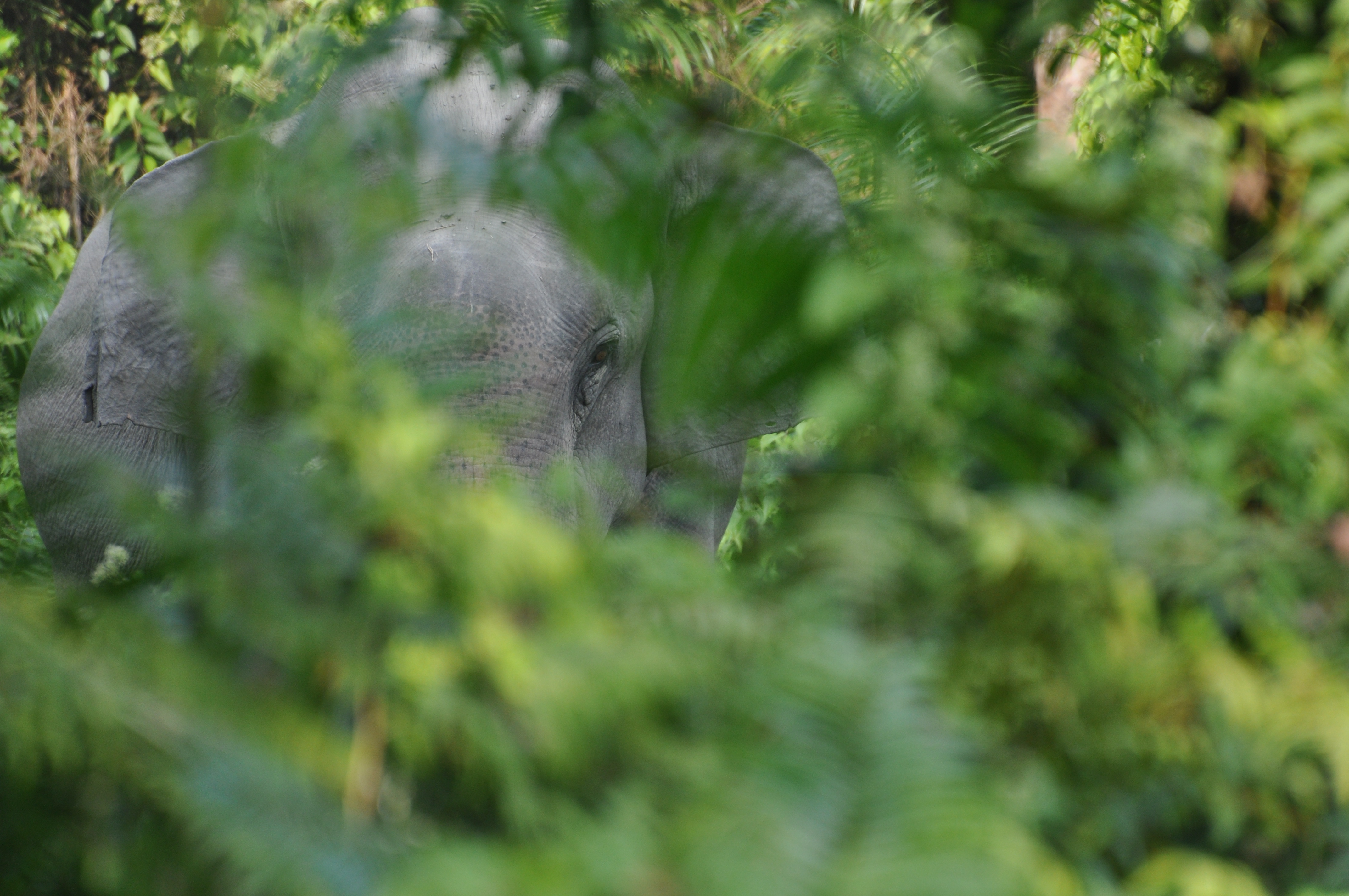
The forest rangers are the unsung heroes of Kaziranga – short on manpower, equipment and often the basic necessities they are engaged in an often dirty war to protect the wildlife from poachers, militants and over-enthusiastic tourists.
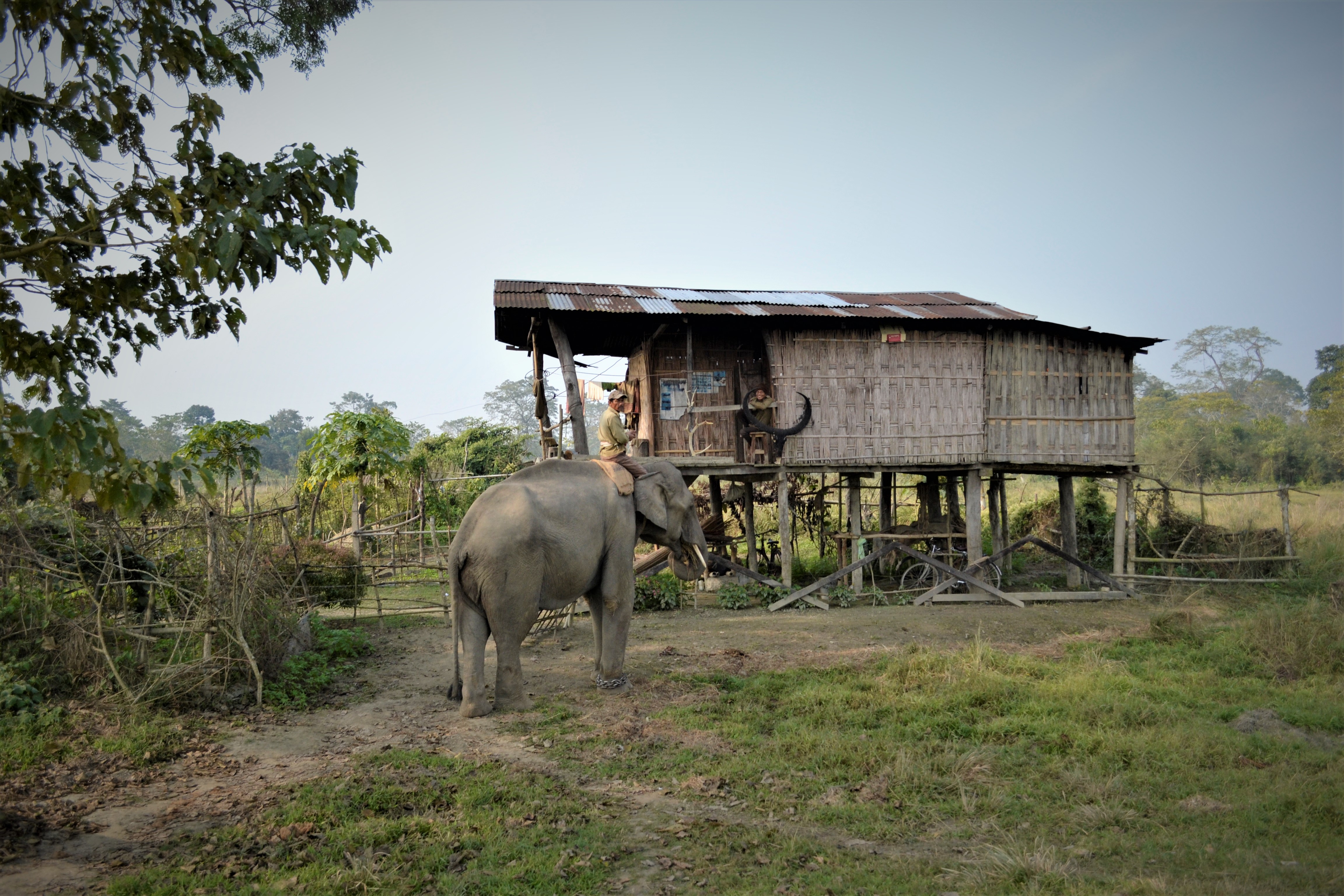
Another high point was spotting a hornbill after much searching. Just as we were giving up, our guide gestured excitedly at one of the trees and there it was in all its glory – a great Indian hornbill. It’s important to take a good guide along for the jeep ride. With the right amount of cajoling, he can take you off the beaten path and show you sights you would have otherwise missed.
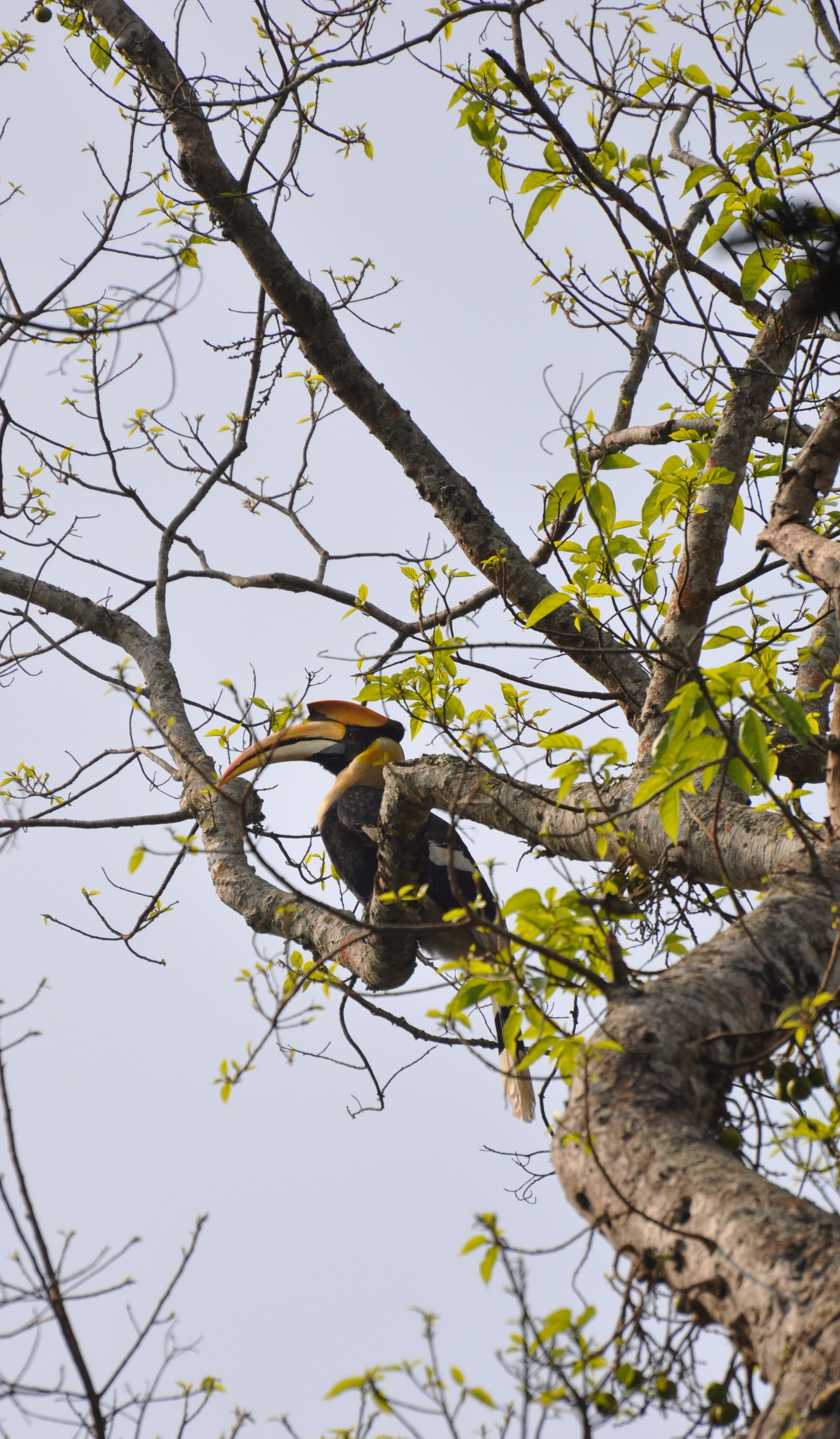
And finally, you; will get the added bonus of getting up close and personal with the truly magnificent Brahmaputra. I would strongly advise you to spend some time on its banks. Do yourself a favor -find a sandy beach, sit down, watch and listen. Some people call it Nirvana.
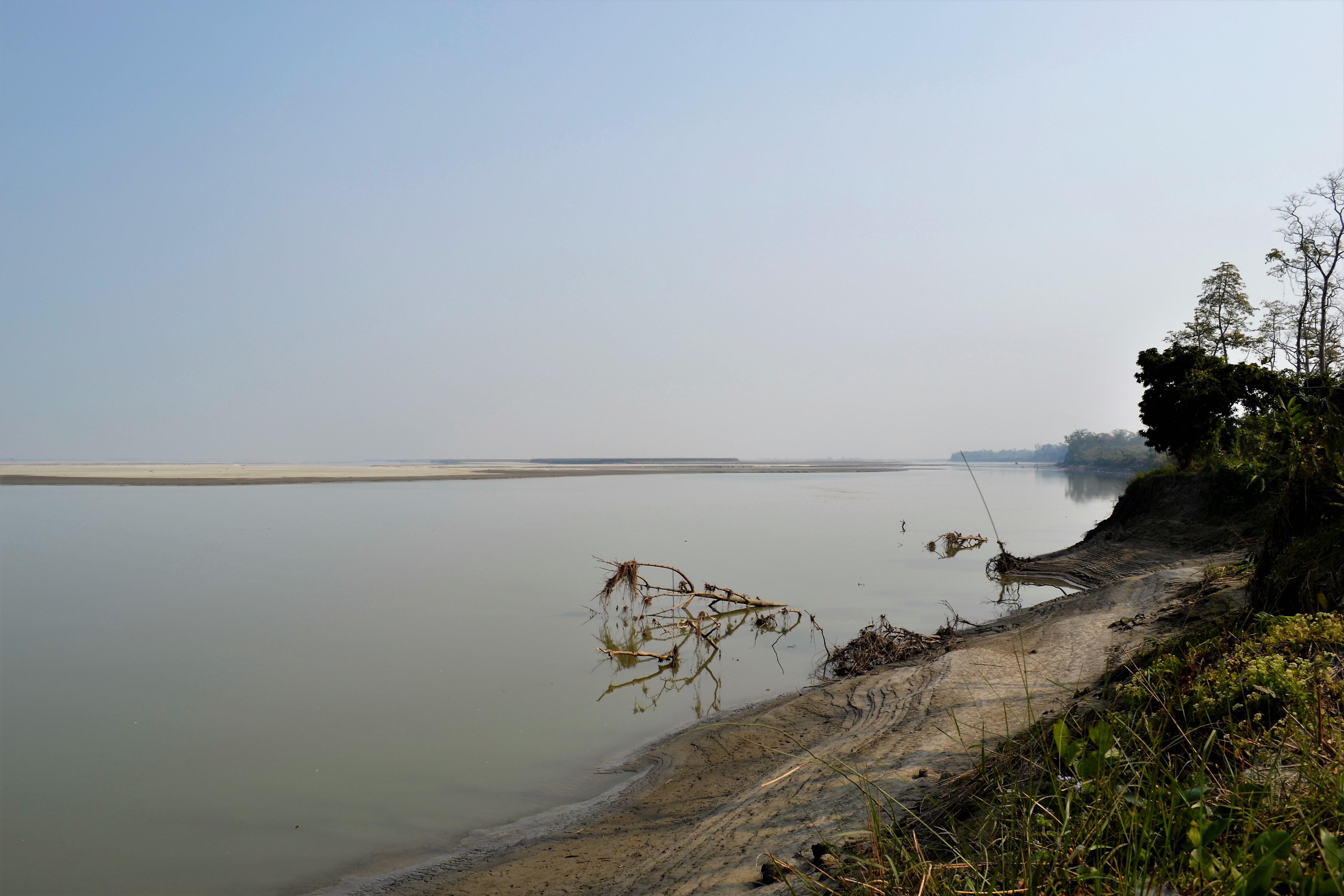
Contribution by: Paul Deepak Naidu, naidupaul@yahoo.co.in

